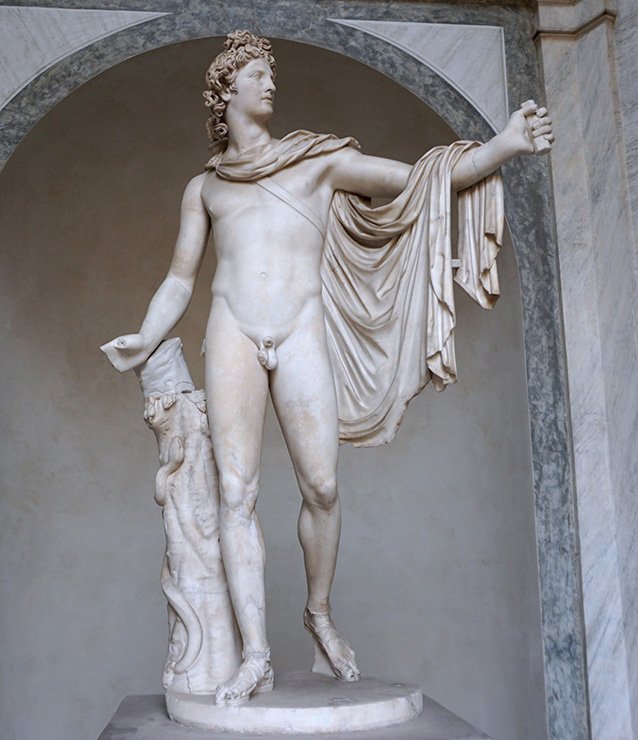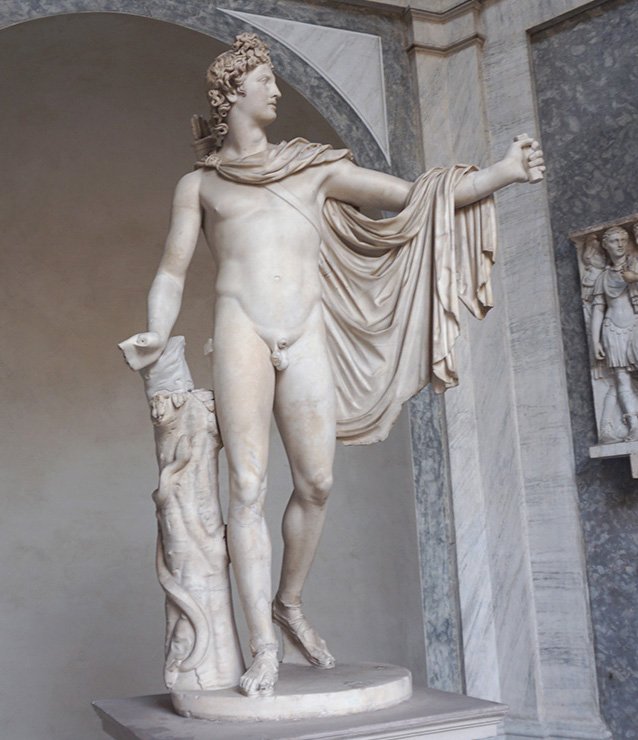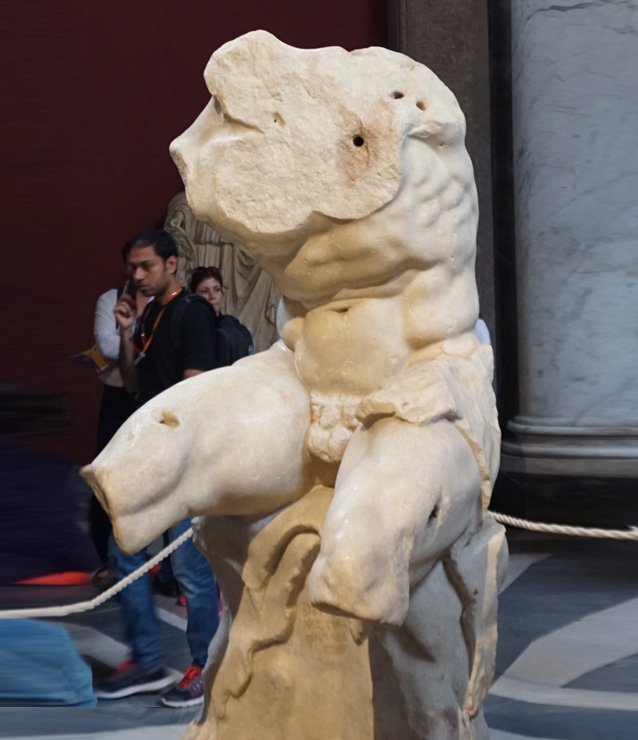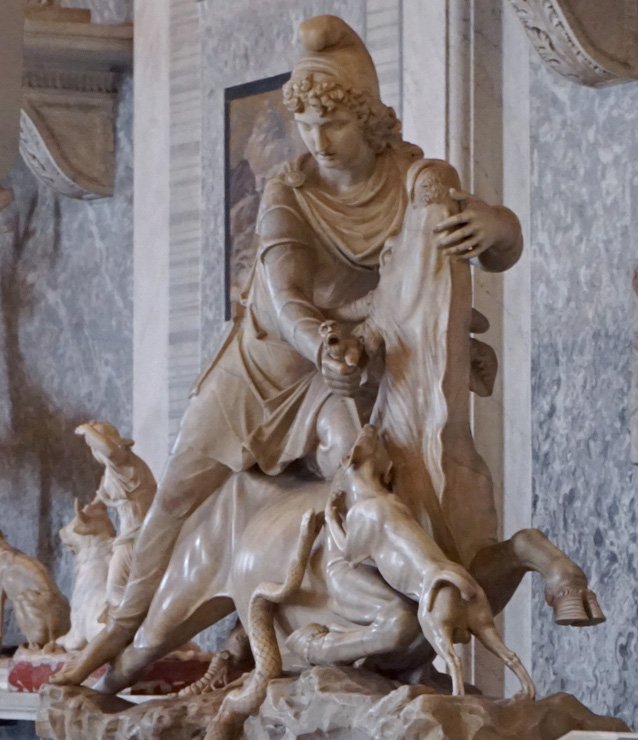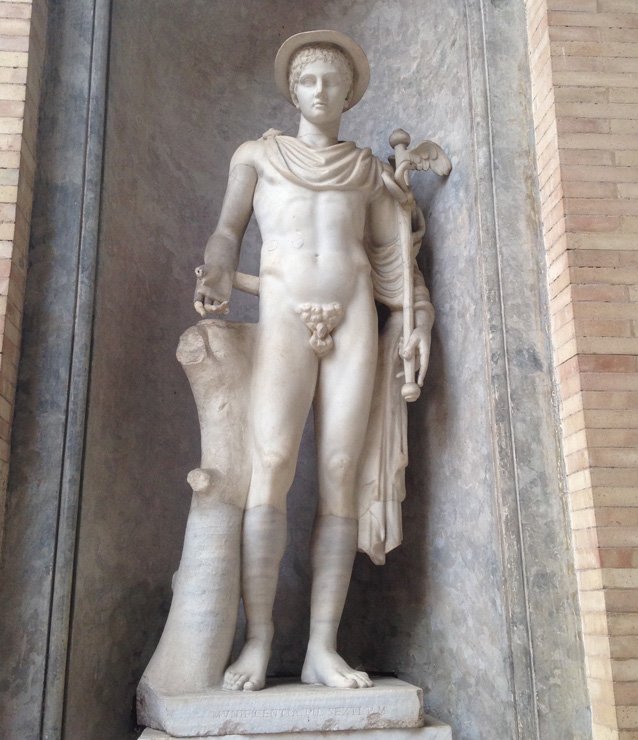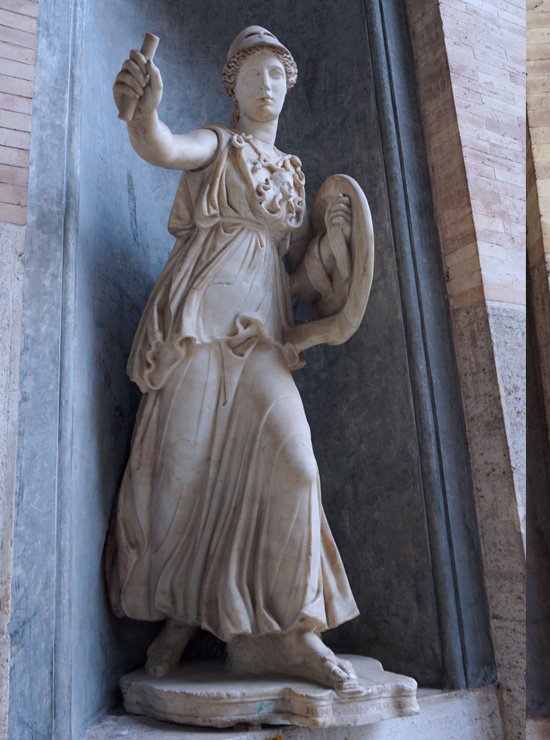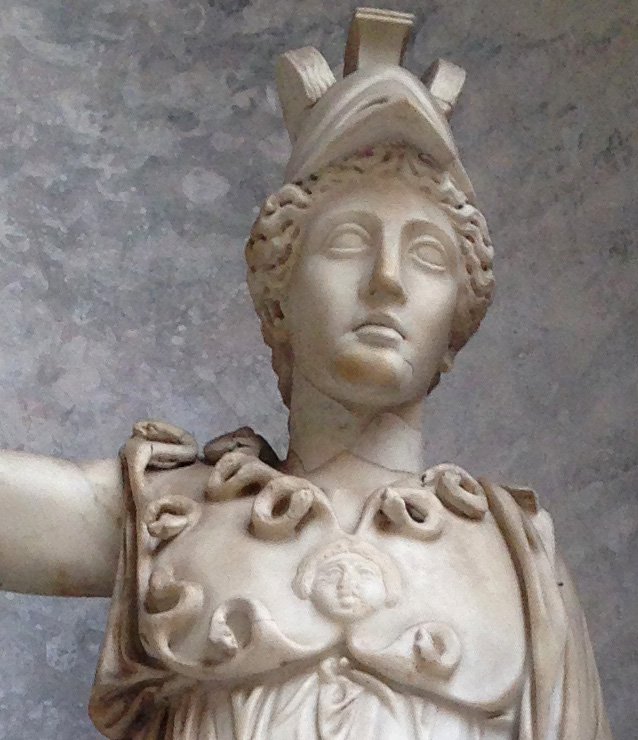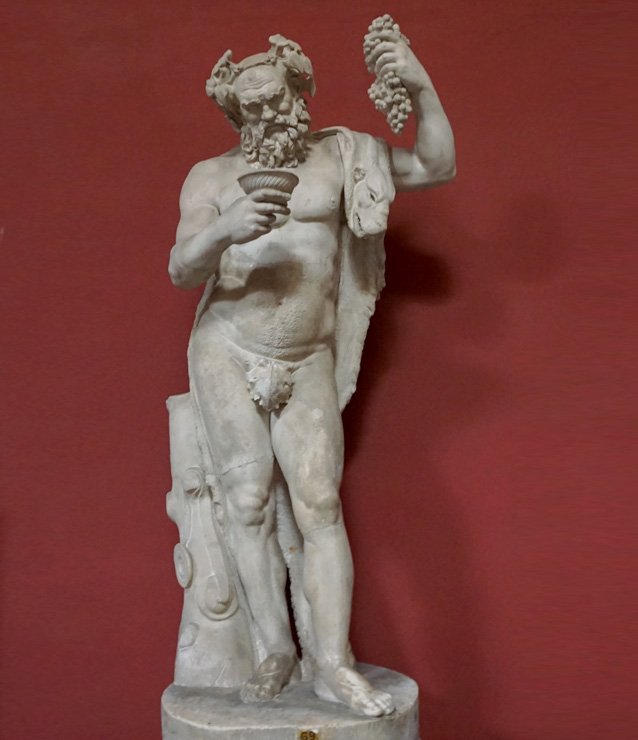Roman Sculptures in the Vatican Museum
It’s hard to compete with the Sistine Chapel, but my favorite part of the Vatican Museum was the Pio Clementino Museum. I was truly overwhelmed by the jaw-droppingly stunning Roman sculptures. I couldn’t imagine the beauty of the Greek originals, but I was grateful to have these masterpieces. They are laid out as though you’re in a small garden. It was a beautiful day and I could sit on a beautiful stone bench and marvel at their power and refinement. They’re not only art, they are historical reference points to our time here on earth. They are our shared heritage. I won’t say too much more. There are links to more information at the end of this page.
Laocoön and His Sons
The sculpture, from around 30 BCE, depicts the Trojan priest Laocoön and his two sons losing a battle to the death with two sea serpents. It was accidentally found in 1506 on the Esquiline Hill in Rome.
“Pliny the Elder had described a statue just like this, as being a masterpiece made by three sculptors from Rhodes, and residing in the palace of the Roman Emperor Titus (part of the Flavian Dynasty, who built the Colosseum.) It’s pretty well accepted that this is the statue Pliny was referring to, although this statue may have been a copy from a 2nd century BCE original.
The Laocoön sculpture depicts a moment from Virgil’s Aeneid, which recounts the Trojan War. You may remember a scene in which the Greeks leave a giant wooden horse outside the gates of Troy. The Trojans naïvely bring in the horse, and subsequently the Greeks who’d been hiding in the horse jump out and destroy Troy. Laocoön, a Trojan priest, had warned the Trojans not to bring in the horse. The gods Athena and Poseidon, who sided of course with the Greeks, sent two sea serpents to kill the priest.
Aeneas heeded the priest’s warning and fled Troy, bound for Italian shores. And for Romans, this is a big deal, since Aeneas was one of the forefathers of Romulus and Remus, the legendary founders of Rome.” [read more…]
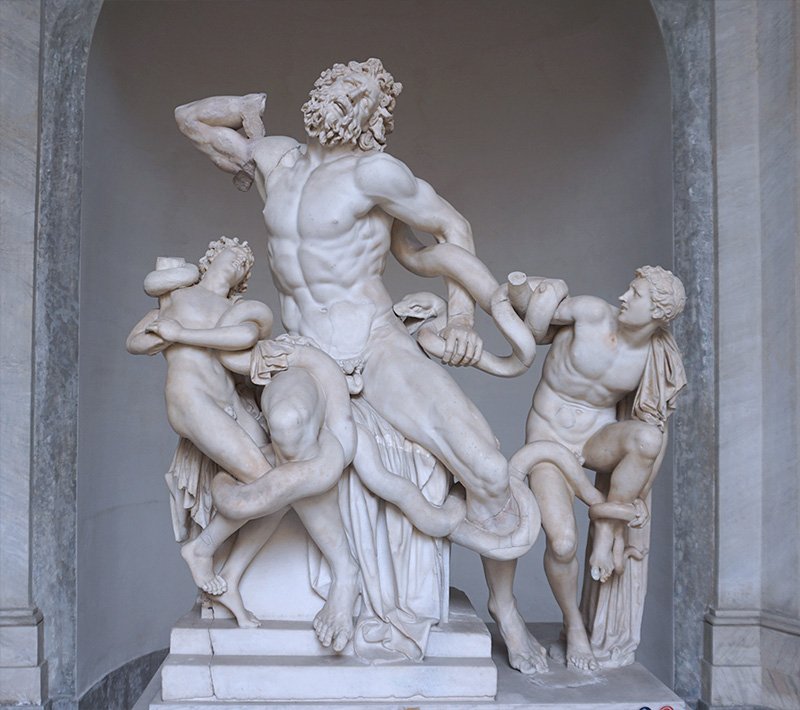
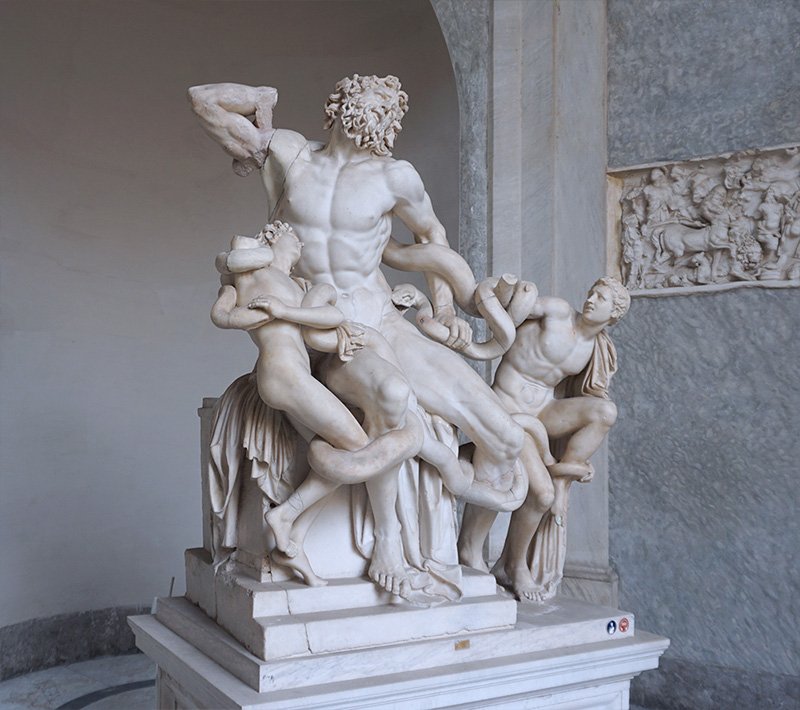

Arno the River God
“This statue, which shows the river god in a traditional reclining pose, dates from the time of the Emperor Hadrian and was inspired by a Greek prototype. In the early 16th century it was displayed in the Courtyard of Statues (Cortile delle Statue) where it was part of a fountain, the basin of which is a sarcophagus dating from 170-180 A.D. decorated with scenes of battles between Greeks and Amazons. The statue was repaired and restored by various Renaissance artists, who replaced many parts, including the head with its expressive bearded face.” [read more…]

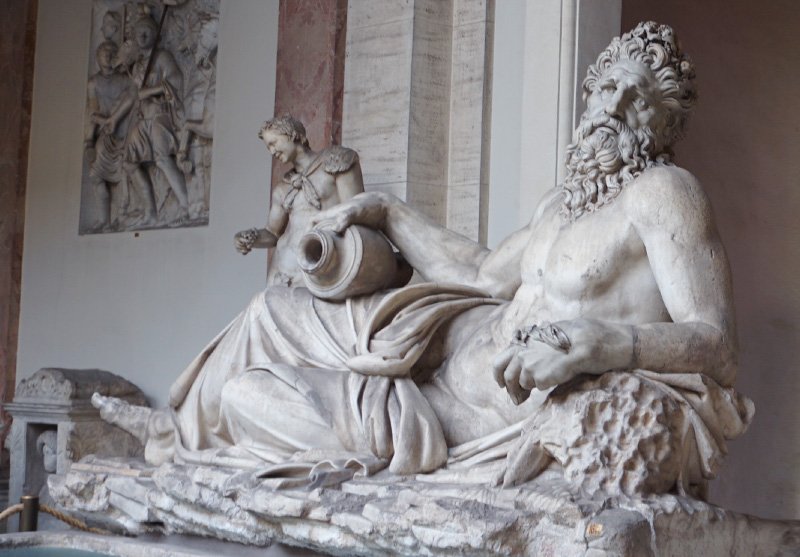

Pio Clementino Museum
“The nucleus of the pontifical collections of classical sculpture dates back to the original collection of pope Julius II (1503-1513) which was housed in the Cortile delle Statue (today the Octagonal Court). During the second half of the 18th century the pontifical collections were enormously expanded both as a result of excavations being carried out in Rome and Lazio, and by donations from collectors and antiquaries.” [read more…]
